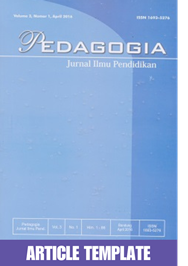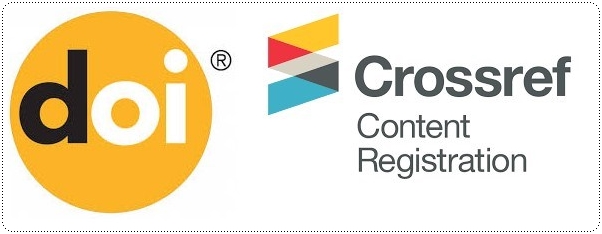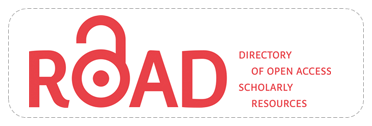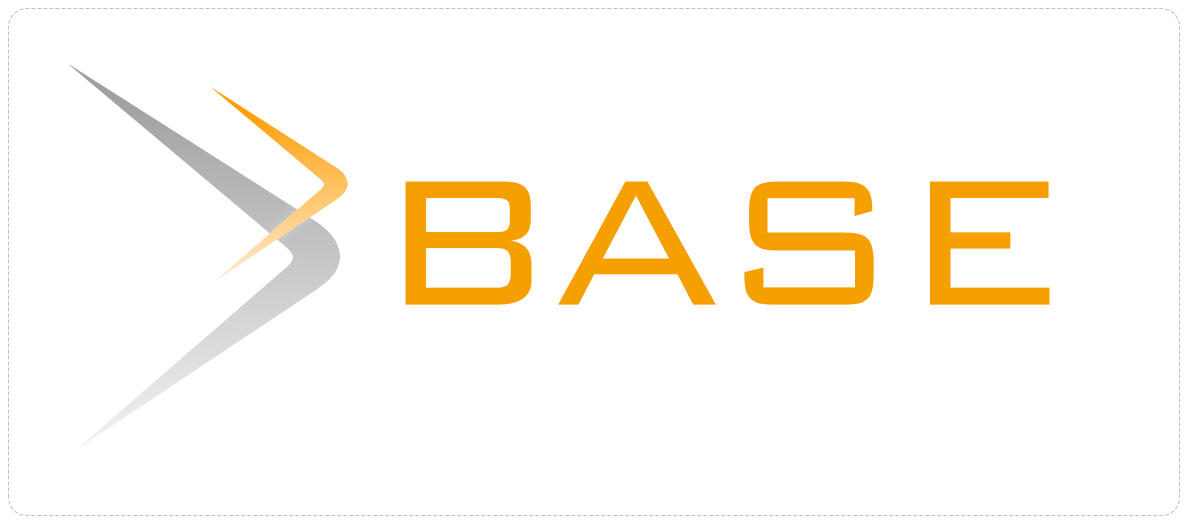EXPLORING STUDENTS’ PERCEPTIONS OF INFORMATION TECHNOLOGY IN PROFESSION –CURRICULUM AND LEARNING BASIC COURSE OF HIGHER EDUCATION: PLATFORMS AND USAGE
Abstract
Abstrak
Teknologi informasi sudah menjadi hal yang umum digunakan oleh masyarakat saat ini. Siswa dengan berbagai tujuan menerapkannya untuk mencari, berbagi, dan mendiskusikan topik-topik tertentu di setiap jenjang pendidikan. Mengintegrasikan teknologi informasi ke dalam mata kuliah Kurikulum Pembelajaran Profesi Dasar (MKDP-Kurpem) belum dikembangkan ke dalam format desain pembelajaran yang baru dengan melibatkan teknologi. Penelitian ini bertujuan untuk menggali persepsi mahasiswa terhadap platform dan penggunaan teknologi informasi pada MKDP-Kurpem. Ini adalah studi deskriptif kuantitatif yang mengukur persepsi siswa tentang teknologi informasi dalam mata pelajaran tertentu. Hasil penelitian menunjukkan bahwa 67,5% siswa dengan rentang usia 20-21 tahun menyatakan bahwa platform yang paling cocok untuk diintegrasikan dalam pembelajaran MKDP-Kurpem adalah Google form. Sedangkan penggunaan yang paling signifikan terkait integrasi ini adalah pada aspek efektivitas dan efisiensi pembelajaran yang mencapai 74,5% dengan rentang usia responden 17-19 tahun. Teknologi informasi telah merambah hampir semua aspek kehidupan termasuk dalam bidang pendidikan. Dari hasil penelitian ini diharapkan dapat dijadikan sebagai acuan dasar pengembangan integrasi teknologi informasi di MKDP-Kurpem untuk memaksimalkan hasil belajar siswa.
Abstract
Information technology has become commonly used by society at this time. Students with various purposes applied them to seek, share, and discuss certain topics at any level of education. Integrating information technology into the basic professional-learning curriculum course (MKDP-Kurpem) has not been developed into the new format of instructional design by involving technology. This study aims to explore students' perceptions of the platform and usage of information technology on MKDP-Kurpem. It is a quantitative descriptive study which measures students' perceptions of information technology in certain subjects. The results of the study showed that 67.5% of students with an age range of 20-21 years stated that the most suitable platform to be integrated in MKDP-Kurpem learning was Google form. While the most significant usage related to this integration was in the aspect of effectiveness and efficiency of learning which reached 74.5% by the age range of the respondents’ from17-19 years. Information technology has penetrated almost all aspects of life as well in the field of education. From the results of this research, it is hoped that it will be used as a basis reference for the development of information technology integration in MKDP-Kurpem to maximize student learning outcomes.
Keywords
Full Text:
PDFReferences
Abdullah, F., & Ward, R. (2016). Developing a General Extended Technology Acceptance Model for E-Learning (GETAMEL) by analysing commonly used external factors. Computers in Human Behavior, 56, 238-256. doi:10.1016/j.chb.2015.11.036.
Arifin, Z. (2019) Evaluasi Pembelajaran: Prinsip-Teknik-Prosedur, Cetakan Kesebelas, Bandung: PT.Remaja Rosdakarya.
Badan Standar Nasional Pendidikan. (2010) Paradigma Pendidikan Nasional Abad XXI, Versi 1.0 - Tahun 2010.
Becker, H. J., & Ravitz, J. L. (1999). The influence of computer and Internet use on teachers' pedagogical practices and perceptions. Journal of Research on Computing in Education, 31(4), 356-384.
Blackwell, C., Lauricella, A., Wartella, E., Robb, M., & Schomburg, R. (2013). Adoption and use of technol- ogy in early education: The interplay of extrinsic barriers and teacher attitudes. Computers & Education, 69, 310–319.
Carbrero, J., & Llorente, M. del C. (2015). Technologias de la informacion y la communication (TIC): escenarios formativos y teorias del aprendizaje. Revista Lasallista de Investigacion, 12 186- 193.
Contreras-Sanzana, G., & Villalobos-Clavería, A. (2010). Educación y educadores. Educación y Educadores, 13(3), 397–417.
Cook, D. A., & Ellaway, R. H. (2015). Evaluating technology-enhanced learning: A comprehensive framework. Medical teacher, 37(10), 961-970. doi:10.3109/0142159X.2015.1009024.
Findik-Coskuncay, D., Alkis, N., & Ozkan-Yildirim, S. (2018). A structural model for students' adoption of learning management systems: An empirical investigation in the higher education context. Educational Technology & Society, 21(2), 13-27.
Goodchild, T. (2018). Does technology really enhance nurse education? Nurse Education Today, 66, 69-72. doi:10.1016/j.nedt.2018.04.005.
Hepp, P. (2015). Desafíos de las políticas de integración de tecnologías en la formación inicial y continua de los docentes. En iipe-unesco Buenos Aires (ed.), Mejorar los Aprendizajes en la Educación Obligatoria: Políticas y Actores (1a ed., pp. 195–2014). Buenos Aires.
Ibieta, A., Hinostroza, J. E., Labbé, C., & Claro, M. (2017). The role of the Internet in teachers’ professional practice: activities and factors associated with teacher use of ICT inside and outside the classroom. Tech- nology, Pedagogy and Education, 26(4), 425–438.
Karami, M .R. (2003). Suitable training with information age and growth .Educational technology, 20, 45-60.
Ketetapan Senat Akademik Universitas Pendidikan Indonesia Nomor 005/Senat Akd./UPI-SK/X/2010 tentang Re-desain Pendidikan Profesional Guru. Kurikulum Universitas Pendidikan Indonesia Tahun 2011.
Ngai, E. W. T., Poon, J. K. L., & Chan, Y. H. C. (2007). Empirical examination of the adoption of WebCT using TAM. Computers & Education, 48(2), 250-267. doi:10.1016/j.compedu.2004.11.007
Pelgrum, W. (2001). Obstacles to the integration of ICT in education: results from a worldwide educational assessment. Computers & Education, 37(2), 163–178.
Peraturan Pemerintah Nomor 19 Tahun 2005 Tentang Standar Nasional Pendidikan, Bandung: Fokusmedia.
Pickering, J. D., & Joynes, V. C. T. (2016). A holistic model for evaluating the impact of individual technology-enhanced learning resources. Medical teacher, 38(12), 1242- 1247. doi:10.1080/0142159X.2016.1210112.
Prensky, M. (2011). Enseñar a Nagivos Digitales. (Sm, Ed.). Madrid.
Pynoo, B., Devolder, P., Tondeur, J., van Braak, J., Duyck, W., & Duyck, P. (2011). Predicting secondary school teachers’ acceptance and use of a digital learning environment: A cross-sectional study. Computers in Human Behavior, 27(1), 568–575.
Setiawan, W. (2006). Pembelajaran Berbasis ICT: Model e-Learning Menggunakan Opensource Moodle, Jurnal Pendidikan: Mimbar Pendidikan, No.4 Tahun XXV 2006, Bandung: UPI-Press.
Shen, C.-w., Ho, J.-t., Ly, P. T. M., & Kuo, T.-c. (2018). Behavioural intentions of using virtual reality in learning: Perspectives of acceptance of information technology and learning style. Virtual Reality. Doi: 10.1007/s10055-018-0348-1.
Silva, J., Gros, B., Garrido, J., & Rodríguez, J. (2006). Estándares en tecnologías de la información y la comu- nicación para la formación inicial docente: situación actual y el caso chileno. Revista Iberoamericana de Educación, 38, 1–17.
Sumak, B., & Sorgo, A. (2016). The acceptance and use of interactive whiteboards among teachers: Differences in UTAUT determinants between pre- and post-adopters. Computers in Human Behavior, 64, 602-620. doi:10.1016/j.chb.2016.07.037.
Sunkel, G. (2006). Las tecnologías de la información y la comunicación (TIC) en
la educación en América Latina. Una exploración de indicadores. Santiago: Publicación de las Naciones Unidas.
Wang, F., & Hannafin, M. J. (2005). Design-based research and technology-enhanced learning environments. Educational Technology Research and Development, 53(4), 5- 23. doi:10.1007/bf02504682.
DOI: https://doi.org/10.17509/pdgia.v19i1.36214
Refbacks
- There are currently no refbacks.
INDEXED BY

This work is licensed under a Creative Commons Attribution-ShareAlike 4.0 International License















